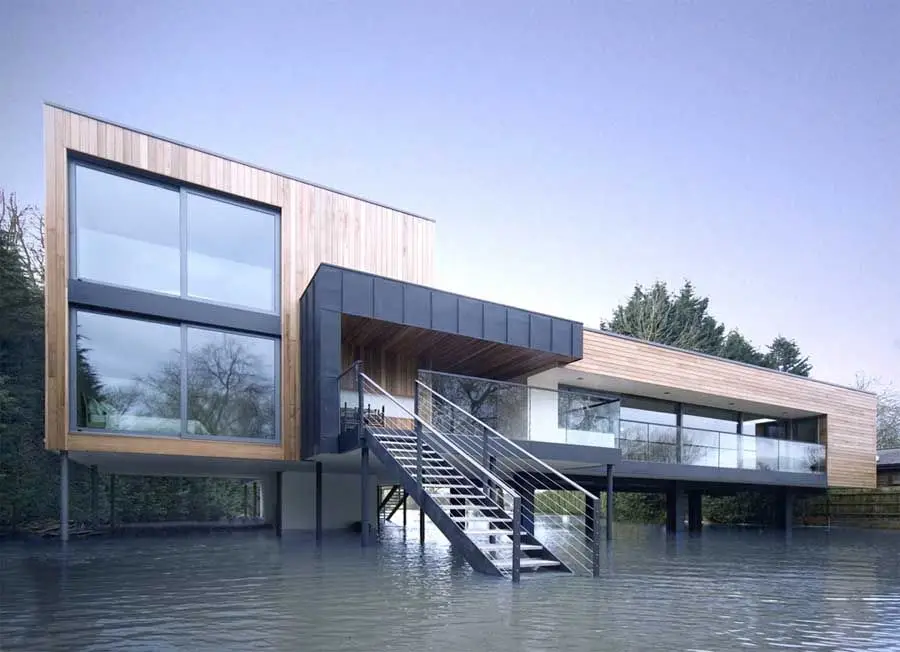


Today, let’s look at and explain the impact of FEMA’s raised flood plain and the 50% rule. Its application to substantial improvement and substantial damage of a property and what this means for any building/renovation work needed to an existing property.
Deep breath and here we go. I will attempt to make an incredibly dry, long-winded, and mildly interesting subject, informative and short (ish). So bear with me.
FEMA stands for – Federal Emergency Management Agency. In short, these are the guys you will go to in the event of a disaster. Created in 1979, the agency’s primary purpose is to coordinate the response to a disaster that overwhelms the resources of local and state authorities, plus has declared a “State of Emergency”. Think hurricanes, fires, flooding, etc.
The so-called “FEMA 50% Rule” is required by the NFIP ( National Flood Insurance Program.) FEMA’s flood insurance program provides affordable flood insurance.
For instance, if a community needs federally backed flood insurance to be made available to its citizens, then they MUST adopt and enforce the rules as required by the NFIP.
The FEMA 50% rule applies to any home or building where the lowest floor is below the 100-year flood elevation. In residential properties, only parking, building access, and limited, incidental storage is allowed below the flood level.
Now does that make sense s far?
If an improvement to an existing structure (building) cost is greater than 50% of the original structure’s value (which will be determined by a county appraiser), it MUST be brought into compliance with the flood damage prevention regulations, to be insured. This includes elevating the building to or above the 100-year flood elevation.

“A floodplain is an area of land susceptible to being inundated by floodwaters”. From Collier County flood plain management document http://www.colliercountyfl.gov/home/showdocument?id=72665
100-year flood means, that in any given year there is a 1% chance of a flood in that area.
Substantial Improvement =
Any reconstruction, rehabilitation, addition, or improvement to an existing structure. Where the cost of the improvement equals or exceeds 50 % of its market value, before the start of construction.
This term includes structures that have incurred “substantial damage.” Regardless of the cause of damage and the cost of repair work performed.
Note – Check State and the community’s floodplain management regulations and building codes to determine whether any local requirements are more restrictive. As they may well be.
Substantial damage =
Damage sustained by a structure. Where the cost of restoring the structure to its original condition (pre-damage) equals or exceeds 50% of the market value of the structure pre-damage.
Note – most damage occurs during a single and usually sudden event. For example, a fire, hurricane, lightning strike, falling tree, tornado, earthquake, flood, or natural gas explosion.
Damage may also be unrelated to a specific event. Examples include soil settlement, exposure to the elements, termite infestation, vandalism, deterioration over time, and other causes. Information part quoted from the Collier County Website
Let’s just put it out there – Global warming. Yes, Water levels are rising, meaning FEMA has to raise the flood plain to accommodate that change. Therefore, in most areas of coastal Florida, flood insurance becomes a necessity.
If we cannot slow this rise quickly enough, then we have to be prepared for the rise in water and the potential of increased flooding. With the seasonal hurricanes and resulting storm surges, buildings in the area are vulnerable and need to be built to, or brought up flood management codes. Hence for insurance purposes, that is where the 50% rule and the NFIP come into play.
I know it is a very long and in-depth subject, but for any work conducted, the team at Hlevel is well versed in the process and can guide you throughout. So please do not hesitate to ask any questions you may have – https://hlevel.info/contact/
For some not-so-exciting, but very informative in-depth reading on the subject then please refer to the “Answers to Questions About Substantially Improved/ Substantially Damaged Buildings FEMA 213 / August 2018” as provided by Collier County.